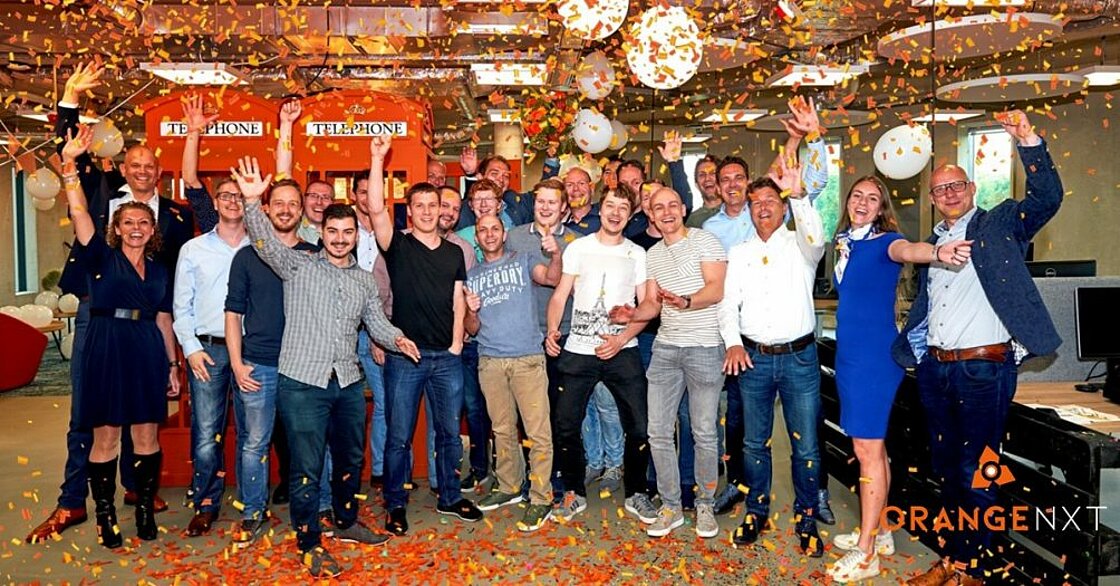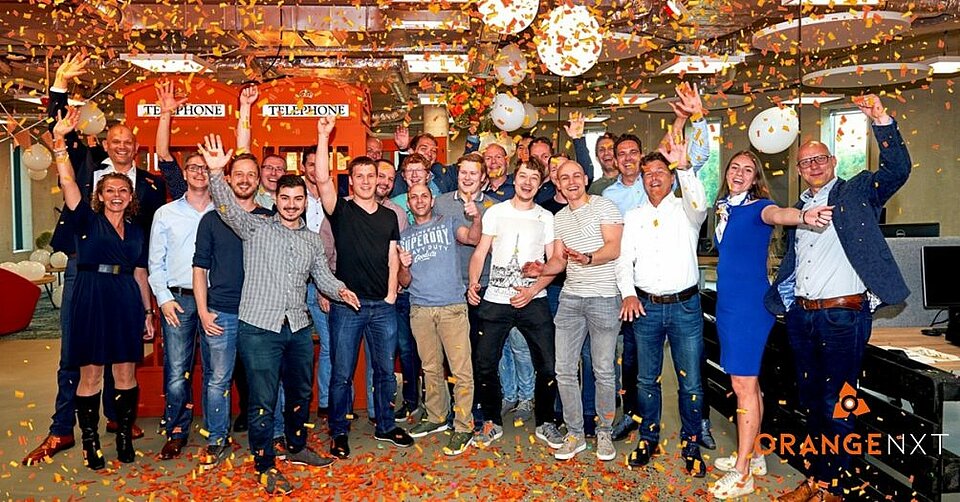OrangeNXT’s software connects people, appliances and data packets

OrangeNXT's platform connects people, devices and data packets. AI provides extra insight into this. That's why this start-up is rewarded with a Gerard & Anton Award.
As the progeny of an entrepreneurial family, it was not an unexpected step for Huub van der Linden (51) to start his own business. After a professional study in accounting and a career in IT (which was an emerging industry during his younger years), he and his partner Jeroen Donkers figured that the future would be defined by AI. Artificial intelligence. Analyzing data and converting it into information that enables consumers to adapt their behavior and companies’ their business plans.
Donkers is originally a computer scientist and now deals with in-depth customer inquiries about software applications. Van der Linden handles the organizational and commercial side of the company. That, together with the vision they share on the products they offer, is what’s behind the engine that drives their business OrangeNXT.
The company is doing well. It has managed to double its turnover every year since it was founded in 2016. This figure amounted to €3.3 million in 2019.
Three products in one
The key to OrangeNXT’s success is that the company offers three products. OrangeNXT connects people with its product mobileNXT. One example of this is software that a delivery company uses to get a customer’s signature upon delivery of a parcel at their doorstep.


OrangeNXT also connects appliances with each other through its other product conNXT. Consider the Internet of Things. This is where appliances send signals to digital networks that are programmed to receive them. Take, for example, a smart central heating unit. It then sends an alert if a specific part shows signs of wear and tear and is at risk of breaking down. That signal is then sent to the network of the maintenance company responsible for that central heating unit. They subsequently procure the relevant part in advance. This is termed predictive maintenance.
The third product is digitalNXT which allows OrangeNXT to link and analyze large data packets. This allows the user to predict certain transactions because the computer anticipates these.
‘Book is ready and waiting before you even order it’
The power of data and algorithms that analyze online search patterns is enormous. For example, an online retailer can analyze you as a consumer based on your past behavior. They can then predict that you will think about buying a particular book. Even before you’ve ordered it, the retailer can prepare the book so that it will be sent to you as soon as you actually order it.”
The combination of OrangeNXT’s products is a godsend for large companies, asserts Van der Linden. This makes the product innovative and competitive when compared to providers of single digital services. For a home delivery company such as HelloFresh, it is essential that orders can be delivered when the customer is at home. They deliver fresh food items like meat and vegetables, after all.
Delivering a package like that a day later or dropping it off outside the front door in the sun for an hour or so before the residents come home is unacceptible. Using OrangeNXT software, HelloFresh can specify on the day of delivery when they can be at a customers’ door within fifteen minutes.
Some companies operate with a delivery timeslot that stretches over a whole day. This often doesn’t work out because most people aren’t home all day. Just when you’re away for a quick errand, the delivery person arrives on your doorstep. But because HelloFresh uses software that monitors the amount of traffic that day and analyzes the weather conditions that might affect any delays, it is possible to provide a fairly precise indication of when the delivery will turn up.
5 minutes later? No problem!
If the customer fails to make that timeslot unexpectedly, they can send a message that they will be there five minutes later. Then the software calculates another address where the driver can deliver a different order to in the meantime.
This level of customer service might well be at the expense of efficiency, says Van der Linden. Because sometimes the driver has to wait a while because they cannot drop by another customer in those abovementioned five minutes. But that’s what the company figures out for them. According to Van der Linden, it all comes down to how important customer satisfaction is to those companies that use OrangeNXT software when it comes to selling their products and services.
One other application that uses OrangeNXT’s software where consumer satisfaction does not play a role, is in the inspection of asphalt roads. Inspectors used to do this manually. They would drive on roads and check the condition of them along the way. Nowadays, they drive along the road with a camera using software that checks which damage on road surfaces are critical and need overhauling.
Choosing expensive potatoes
OrangeNXT made a related software application for a major potato producer. This uses camera footage of potatoes to determine which ones have scabs and which do not. Those with potato scabs end up on the B-quality conveyor belt. Those without scabs are put on the A-quality.
conveyor belt.
Aside from Van der Linden and Donkers, the company is young. Van der Linden believes that this helps to better understand the future. “Young people communicate differently than people of my generation. They no longer send emails. Some of them don’t even use WhatsApp!”